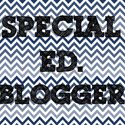Letter-Sound Correspondence
December 11, 2016
It an be very challenging to help students master sound-letter correspondence. This skill is the corner stone of everything we do as readers and writers. When I'm asked by teachers how I build this skill, this is the lesson format I use to teach letter-sound correspondence while building their skills as readers and writers.
What are letter-sound correspondences?
Letter-sound correspondences involve knowledge of:
Why is knowledge of letter-sound correspondences important?
Knowledge of letter-sound correspondences is essential in reading and writing
What sequence should be used to teach letter-sound correspondence?
Letter-sound correspondences should be taught one at a time. As soon as the student acquires one letter sound correspondence, introduce a new one.
I tend to teaching the letters and sounds in this sequence
Start by teaching the sounds of the letters, not their names. Knowing the names of letters is not necessary to read or write. Knowledge of letter names can interfere with successful decoding.
The student will:
Instructional Task
Here is an example of instruction to teach letter-sound correspondences
Teacher
After practice with this letter sound, the instructor provides review
Teacher
Instructional Materials
Various materials can be used to teach letter-sound correspondences
Instructional Procedure
The teacher teaches letter-sound correspondences using these procedures:
Pointers
There are a wide range of fonts. These fonts use different forms of letters, especially the letter a.

What are letter-sound correspondences?
Letter-sound correspondences involve knowledge of:
- the sounds represented by the letters of the alphabet
- the letters used to represent the sounds
Why is knowledge of letter-sound correspondences important?
Knowledge of letter-sound correspondences is essential in reading and writing
- In order to read a word:
- the student must recognize the letters in the word and associate each letter with its sound
- In order the student must break the word into its component sounds and know the letters that represent these sounds.
What sequence should be used to teach letter-sound correspondence?
Letter-sound correspondences should be taught one at a time. As soon as the student acquires one letter sound correspondence, introduce a new one.
I tend to teaching the letters and sounds in this sequence
- a, m, t, p, o, n, c, d, u, s, g, h, i, f, b, l, e, r, w, k, x, v, y, z, j, q
- Letters that occur frequently in simple words (e.g., a, m, t) are taught first.
- Letters that look similar and have similar sounds (b and d) are separated in the instructional sequence to avoid confusion.
- Short vowels are taught before long vowels.
- I tend to teach lower case letters first before upper case letters. Pick one and stick to it.
- prior knowledge
- interests
- hearing
Start by teaching the sounds of the letters, not their names. Knowing the names of letters is not necessary to read or write. Knowledge of letter names can interfere with successful decoding.
- For example, the student looks at a word and thinks of the names of the letters instead of the sounds.
The student will:
- listen to a target sound presented orally
- identify the letter that represents the sound
- select the appropriate letter from a group of letter cards, an alphabet board, or a keyboard with at least 80% accuracy
Instructional Task
Here is an example of instruction to teach letter-sound correspondences
Teacher
- introduces the new letter and its sound
- shows a card with the letter m and says the sound “mmmm”
After practice with this letter sound, the instructor provides review
Teacher
- says a letter sound
- listens to the sound
- looks at each of the letters provided as response options
- selects the correct letter
- from a group of letter cards,
- from an alphabet board, or
- from a keyboard.
Instructional Materials
Various materials can be used to teach letter-sound correspondences
- cards with lower case letters
- an alphabet board that includes lower case letters
- a keyboard adapted to include lower case letters
- listen to the target sound – “mmmm”
- select the letter – m – from the keyboard
Instructional Procedure
The teacher teaches letter-sound correspondences using these procedures:
- Model
- The teacher demonstrates the letter-sound correspondence for the student.
- Guided practice
- The teacher provides scaffolding support or prompting to help the student match the letter and sound correctly.
- Independent practice
- The student listens to the target sound and selects the letter independently.
- The teacher monitors the student’s responses and provides appropriate feedback.
Pointers
There are a wide range of fonts. These fonts use different forms of letters, especially the letter a.
- Initially use a consistent font in all instructional materials (I use one that have the capital I and lower case q-I want.)
- Later, I introduce variations in font.

Labels:beginning readers,parents,small group
Subscribe to:
Post Comments
(Atom)

About Me
Welcome to my all thing special education blog. I empower busy elementary special education teachers to use best practice strategies to achieve a data and evidence driven classroom community by sharing easy to use, engaging, unique approaches to small group reading and math. Thanks for Hopping By.
Resource Library
Thank you! You have successfully subscribed to our newsletter.
Search This Blog
Labels
21st Century
Autism
Bloom's Taxonomy
DIBELS
ELL strategies
Formative Assessment
Fountas and Pinnell
Guided Reading
IEP
Just Words
Progress monitoring
RTI
Reading Comprehension
Wilson Reading System
apps
back to school
beginning readers
best practices
books to read
classroom
common core
comprehension
data
differentiation
fluency
freebie
intervention
lesson plan
math
parents
phonics
reading
small group
special education
teaching
technology
vocabulary
writing












0 comments:
Post a Comment